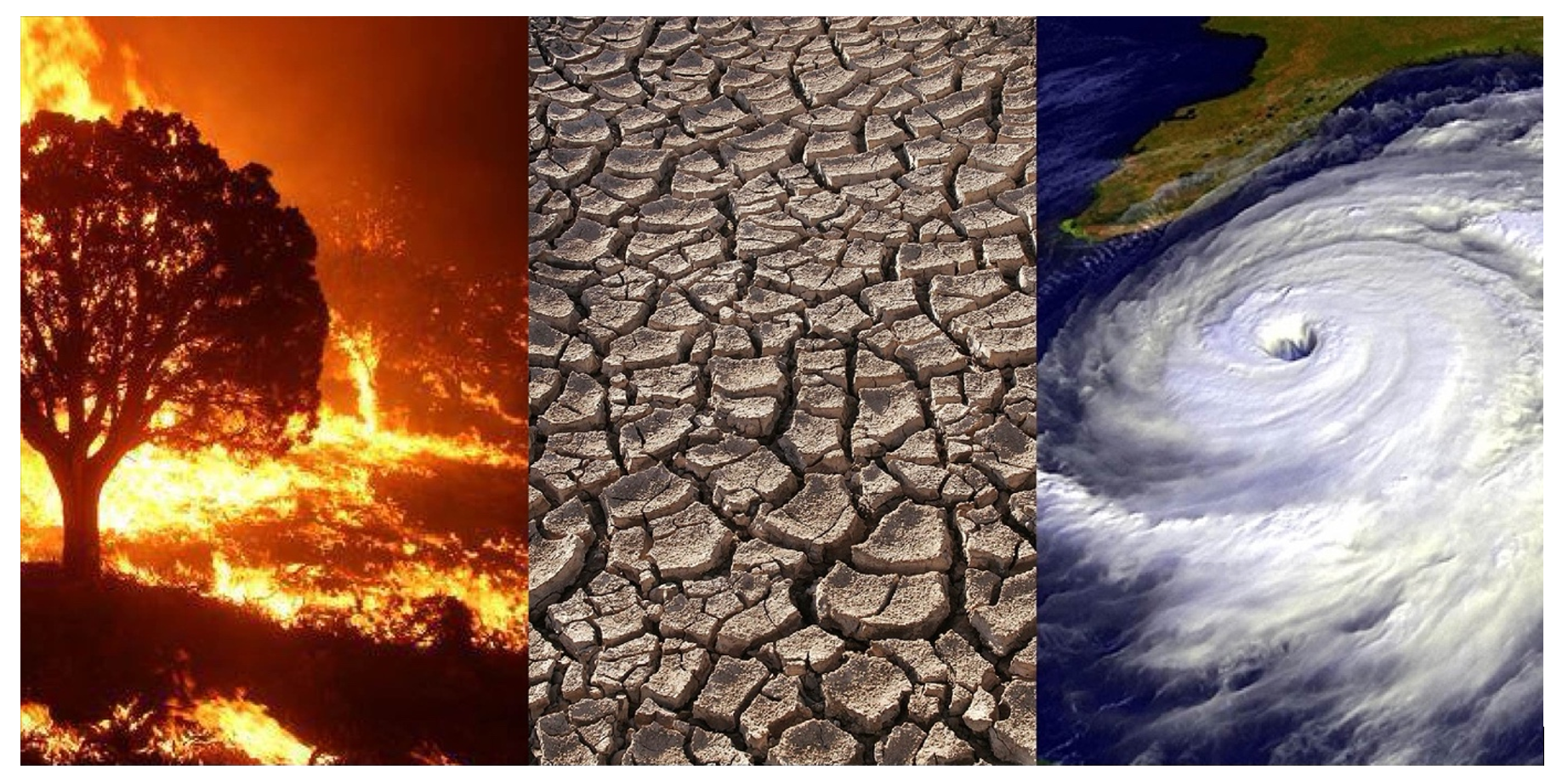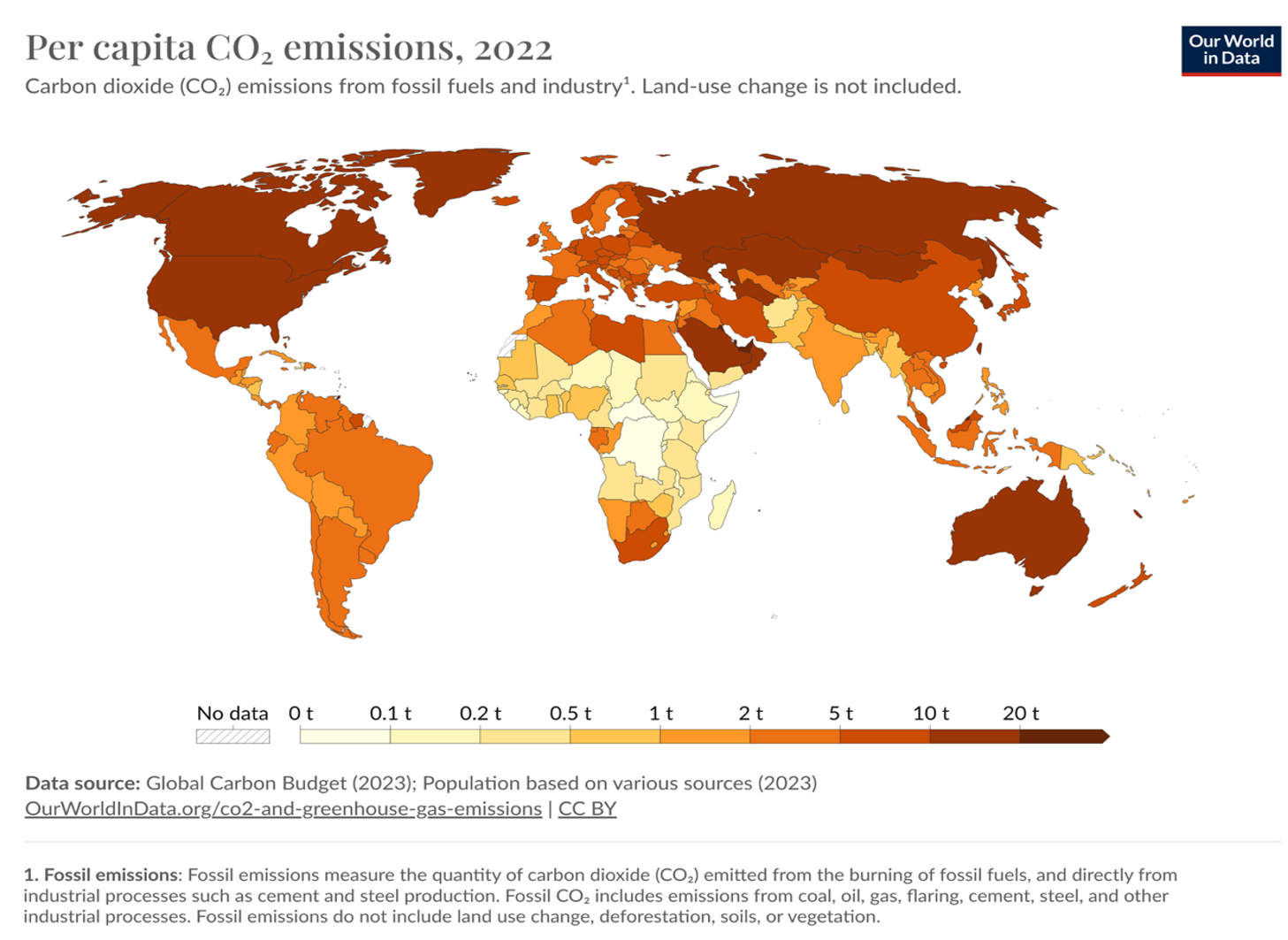The unchecked burning of fossil fuels has dramatically increased the amounts of heat-trapping greenhouse gases released into the atmosphere. Global temperatures are rising, and the world is now in a period of accelerated climate change.
To see this rapid change, play the above video (source: NASA Scientific Visualization Studio) of a map of the world which captures monthly temperature anomalies (meaning changes from an average) from the summer of 1880. The period 1850 to 1900 represents pre-industrial temperature.
The soaring temperatures in 2023 brought home the reality of climate change driven by human activity and boosted by a natural weather phenomenon called El Niño. In fact, 2023 smashed the record for the world’s hottest year since 1880. This prompted scientists’ urgent warning that unless we rapidly reduce fossil fuel burning, the planet as we know it will become uninhabitable. The Earth was 1.4C (34F) hotter in 2023 compared with the pre-industrial period before the mass burning of fossil fuels ignited the climate crisis.
The figure is uncomfortably close to the 1.5C (34.7F) temperature target set by countries in Paris, France in 2015, although the global temperature would need to be consistently above 1.5C for the target to be considered breached. Scientists at the European Unions’ Copernicus Climate Change Service (CCCS) have predicted that the 1.5C mark will be passed for the first time by the end of 2024.
The Paris Agreement is a legally binding international treaty signed by 194 states and the European Union aimed at mitigating and adapting to climate change.
Despite some successful efforts to reduce fossil fuels, emissions reached record levels in 2023. The World Meteorological Organization anticipated that the El Niño event, characterized by heightened sea surface temperatures in the eastern tropical Pacific and weaker trade winds, is likely to turn up global warming impacts.
Africa is warming faster than the global average.
Watch this United Nations Climate Change video to find out more on the treaty and how it works:
Major cities in East Africa have witnessed an increase in temperatures. Since 1860, Addis Ababa (Ethiopia) has warmed by 2.2°C, Khartoum (Sudan) by 2.09°C, Dar es Salaam (Tanzania) by 1.9°C, Mogadishu (Somalia) by 1.9°C, and Nairobi (Kenya) by 1.9°C (East Africa Hazards Watch). All of these are higher than the global average of 1.4C.
The ice cover of Mount Kilimanjaro decreased 85% between 1912 and 2007. The snow could disappear in less than 20 years and ice as soon as 2022. We might well be the last generation to see snow on Mount Kilimanjaro and the first to witness the disruption of the ecological systems and biodiversity it supports.
Africa unjustly pays the highest price
As you can see from the map below from Our World in Data, thee main fossil fuel emitters are the United States, China, India and Russia with South Africa leading the pack in Africa. Although Africa is by far the lowest emitter, claiming less than 5% of global greenhouse gas emission, the continent is the most vulnerable to the negative impacts of climate changes.
Africa with most low-income countries, faces the worst damage due to climate change and further risks to its economies, infrastructure investments, water and food systems, public health, agriculture, and livelihoods.
Here is a useful source comparing carbon emissions in Africa countries. Look and discover where your country ranks. The higher up the worse the emissions. It’s a good policy for journalist to watch what governments are doing to reduce carbon emissions.
Extreme Weather events
Extreme weather is becoming more frequent and intense in many places because of climate change.
 Source: left – Mike McMillan/USFS, center – Tomas Castelazo / Wikimedia Commons / CC BY-SA 4.0, right – NASA
Source: left – Mike McMillan/USFS, center – Tomas Castelazo / Wikimedia Commons / CC BY-SA 4.0, right – NASA
Here are four ways climate change is linked to extreme weather.
- Hotter and longer heatwaves can make existing drought conditions worse by drying out the soil.
- Longer Droughts: Increased demand for water, especially farmers, in hot weather puts even more stress on the water supply. In parts of East Africa, there were five consecutive failed rainy seasons between 2020 and 2022, as the region suffered its worst drought in 40 years. Climate change has made droughts like this at least 100 times more likely, according to the World Weather Attribution.
- More cyclones A record-breaking number of eight tropical cyclones developed over the Indian Ocean and made landfall over different locations in Asia and Africa. The Indian Ocean has been reported to be the fastest-warming ocean leading to an increase in the number and intensity of tropical cyclones impacting East and Southern Africa. The strongest tropical cyclones on record to affect Mozambique and Somalia occurred in 2018 and 2019. The impact of cyclones now extends beyond coastal areas to inland countries like Zimbabwe and Malawi.
- Wildfires Extreme and long-lasting heat draws more and more moisture out of the ground and vegetation. These tinder-dry conditions provide fuel for fires, which can spread at an incredible speed, particularly if winds are strong.
Learn more about climate models here: https://climatekids.nasa.gov/climate-model/
Environmental consequences of climate change
- Warming temperature of the earth’s surface and the oceans
- Changes in the global water cycle (‘hydrologic’ cycle): Over the past century there have been distinct geographical changes in total annual precipitation (e.g. rain, snow), with some areas experiencing severe and long-term drought and others experiencing increased annual precipitation. The frequency and intensity of storms increases as the atmosphere warms and can hold more water vapour.
- Shrinking glaciers and ice: Across the globe, nearly all glaciers are melting and decreasing. One billion people living in river areas nearby are impacted.
- Sea level rise: Warmer water expands, so as oceans warm, the increased volume of water is causing sea level rise. Melting glaciers and snowpack also add to rising seas.
- Biodiversity loss: Climate change has altered global marine, terrestrial, and freshwater ecosystems. It has led to the loss of local species, increased diseases and the deaths of plants and animals, resulting in the first climate-driven extinctions.
- Ocean acidification: Oceans absorb about 25% of emitted (CO2) from the atmosphere, which make the seawater acidic. Ocean acidification can eat away at the minerals that coral reefs, shellfish and other marine life use to build their shells and skeletons. This means less biodiversity, less sea food supplies for coastal communities.
- Impact on agriculture and livestock
Global warming has already affected the length of the growing season in large parts of the world. Similarly, changes in temperatures and seasons are increasing insects, invasive weeds and diseases that can affect crops. The same is happening with livestock. Climatic changes are directly affecting important species in several ways including reproduction, metabolism and diseases.
Human consequences of climate change
While the impact of climate change on the environment has been recognised for decades, the impact on human health is finally getting the attention it deserves.
In an historic milestone marking the inaugural Health Day at the 28th UN Climate Change Conference (COP28) in Dubai in 2023, global leaders united in endorsing the health and climate change declaration, sounding the alarm on the severe health implications of climate change. Emphasizing the critical role of the UNFCCC and the Paris Agreement, the declaration stresses the urgent need to tackle the links between climate change and health.
Speaking at COP28 launch WHO Director-General Dr Tedros Adhanom Ghebreyesus said: “The climate crisis is a health crisis, but for too long, health has been a footnote in climate discussions.” He added that reducing the health impacts of climate change demands action across all of society, including steps to decarbonize energy systems to reduce emission.
- For an easy-to-understand explanation of El Niño and La Niña natural systems see https://www.bbc.com/news/science-environment-64192508
- Here is a useful guide on how to report on extreme weather events: https://www.worldweatherattribution.org/wp-content/uploads/ENG
- A resource explaining how to use maps in your reporting: https://earthjournalism.net/resources/how-to-use-maps-effectively-in-climate-and-environmental-journalism







